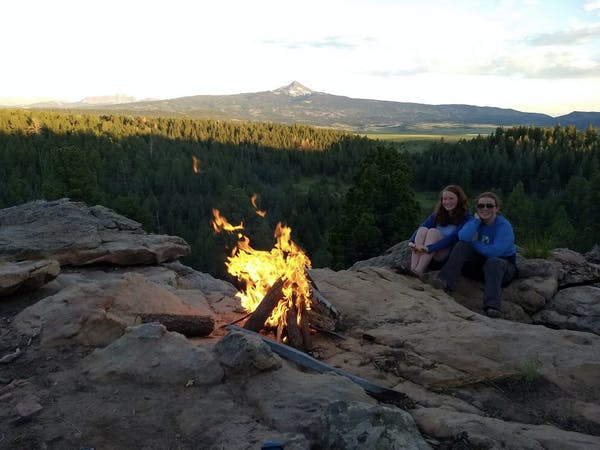The Survival Rescue course is designed to simulate a true survival scenario. Held in a remote location in the desert or mountains, the course is built around a realistic survival situation in which something unexpected has happened to your group.
Survival
Water Purification
One can only live without water for about 3 days meaning drinking clean water is essential if we don’t want to become sick and die. Purification of water from bacteria, viruses, parasites, Protozoa, chemicals and nuclear contamination will be covered. We will examine the usage of halogenation, distillation, filtration, heat, and ultraviolet light. We will also show methods of coagulation and flocculation used in purification. Even with limited supplies it is possible to purify water!
Shelter
One of the highest priorities for survival besides water is staying warm and dry. Knowing how to build a shelter or just survive a freezing night in a debris shelter will save your life.
Fire building
Learn how to start a fire from wet wood with only a spark! To be able to build a fire in a survival situation not only heats you up but gives you huge degree of confidence and success to continue to survive.
Edible Plants
What are the four edible plants world wide? What local plants can you safely eat? How do you check to see if a plant is edible? What do you do if you get poising? These and more questions will be answered in this section.
Signaling
When surviving if you don’t know how to signal help your chances of surviving significantly decrease. Learn how to signal using techniques such as mirrors, snow, flares, SOS, fires, etc.
Map,GPS, and compass navigation: 3-6 hours
How can you tell direction in the Wilderness? Do you know how to use a compass and correlate this with a map correcting for magnetic declination? What are the differences between Degrees minutes seconds, decimal degrees, degrees minutes, and UTM (Universal Transverse Mercator) and who uses each? Do you understand how SPOT, inReach, and PLB (Personal Locator Beacon) and EPIRB’s (Emergency Position Indicating Radio Beacon) work? We will do hands on usage of these devices and practice using compass, map, and GPS.
Rescue
Flood and Swift Water: 4-10 hours
With global warming we are seeing a tremendous increase in hurricanes and floods where rescue is needed. We will practice techniques such as shallow water crossing, stainer drills, throw bagging, moving people across a flooded channel, defensive swimming, and more. You will also learn water hydrology which will be very useful. This is a fun and exciting training.
Rope Rescue: 4-12 hours
This rescue training will help you be able to safely haul a victim up a steep angle. If you are taking kids repelling we will show how to do it safely. We will cover knots, patient packaging, haul systems, anchors, mechanical advantage and much more. Most of this course is low angle (up to 60 degrees) we will also cover repelling techniques in a steep and vertical environment.
Wilderness Medicine
Bites and Stings
From rattle snake bites to bee stings and anaphylaxis. This is a fun training on how to diagnose and treat the venomous bites and stings.
Hypo and Hyperthermia
From freezing rain to desert heat how do you prevent and take care of patients suffering from the elements. We will also cover drownings and near drownings in this section.
Fractures and Improvised Splinting: 4 hours
Its one thing to show up in a 21st century ER with all the amenities available then to find yourself with a friend in the wilderness that has a broken femur from a bike wreck. How do you splint an extremity? Will placing a tourniquet make your friend lose his leg? Can and or should you straighten the extremity. All these things will be discussed and practiced.
Burns, Wounds, and Bandaging
Burns are common in the wilderness setting and one should know how to deal with them. Bandaging is a basic skill that anyone in a disaster or wilderness setting should know how to do.
Chest and Abdominal Trauma
From open abdomens with intestines protruding out, sticks penetrating the chest, to rib fractures, how do you handle theses injuries? What can you do to save someones life? Prompt knowledge in these areas will save a life!
Head and Facial Injuries
Nose bleeds to broken teeth will be covered. What if you were rafting in the Grand Canyon and a friend hit his head when he tripped on a rock causing a loss of consciousness. Do you need to call a helicopter or can you continue with your trip? This is a great practical course.
Managing Illness in Remote Settings
Heat attacks, strokes, appendicitis, travelers diarrhea and more illness can cause a fun family vocation into a nightmare. How do you diagnose and treat these illness will be covered.
QUICK TIPS
If your group is interested in building a custom milt-day adventure package head on over to our Multi-Day Group Adventures page to get started.
We Provide: Guide(s) experienced in wilderness adventuring to lead and assist you on your trek. Every guide has emergency medical & rescue training. A medical kit and emergency communication device accompany every group.











